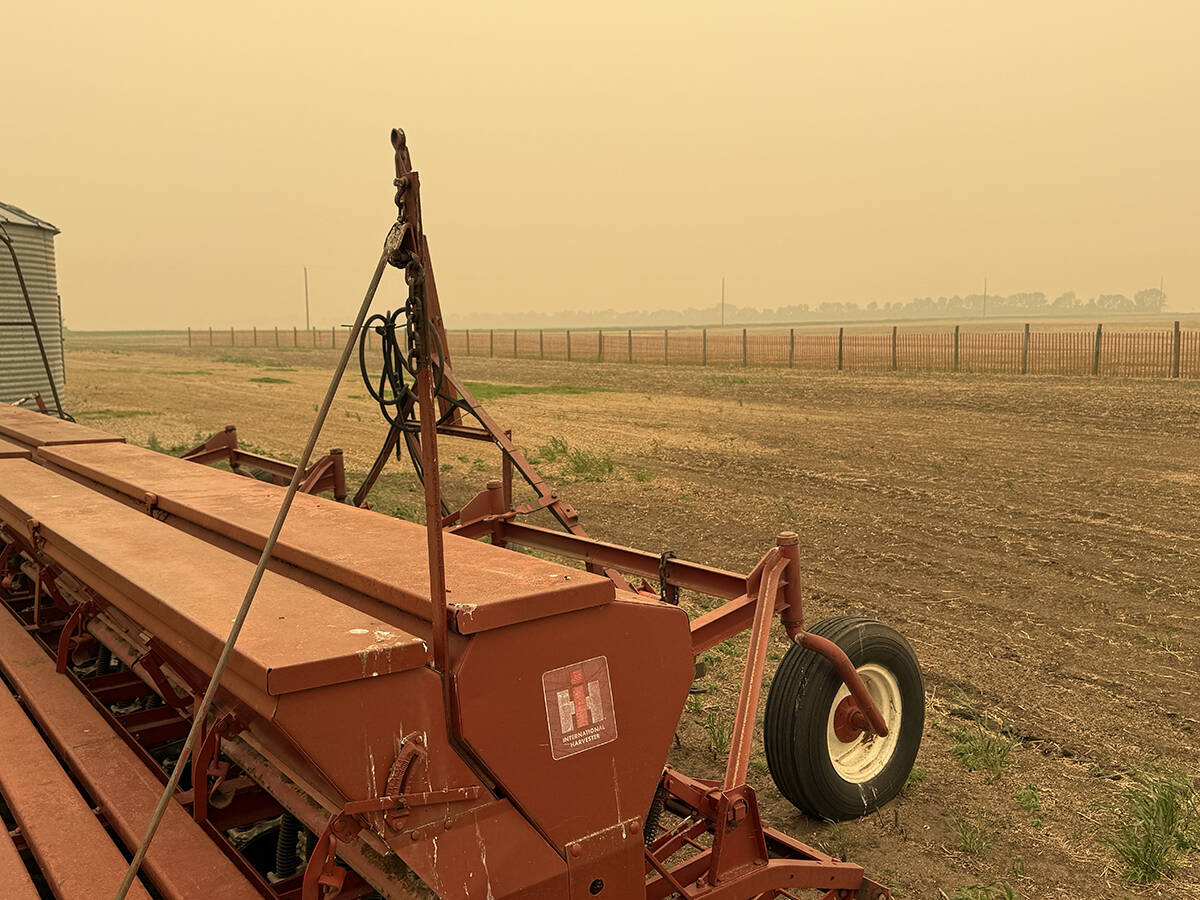KILLAM, Alta. – Last fall Jim Dechaine of St. Lina, Alta., gambled that the American border would reopen. He delayed selling his calves in hopes of higher prices.
This fall Dechaine is selling those calves.
“I took a gamble on the fact the border would open and I got caught when it didn’t,” said Dechaine, as he watched a row of order buyers bid on his yearling heifers and steers at the Killam Livestock market’s weekly sale.
With prices for yearlings up 10 cents a pound in the first week of September, he’s a bit happier with the prices, but knows he can no longer keep the animals.
Read Also

Wildfires have unexpected upside this year
One farmer feels smoke from nearby wildfires shrouded the July skies and protected his crop from the sun’s burning rays, resulting in more seeds per pod and more pods per plant.
“All my bills are made for $800 calves and our calves are making $600,” said Dechaine.
Rod Stordahl, owner of Killam Livestock, said there’s indecision among cattle producers about whether to keep their fall calves or hold their noses and sell.
He said since the beginning of September the number of yearlings coming to market has risen, but the traditional fall run of calves is off to a slow start.
John Rawe, an order buyer from Strome, Alta., said he has several orders from feedlot owners to buy cattle, but feedlots are not being “overly aggressive” with the prices they’re willing to pay or the numbers they want.
“They’ve all taken some big hits, but they don’t want to get caught without inventory,” said Rawe.
He’s also seeing cattle producers hold onto their animals until they hear details of an expected new federal BSE assistance program that may encourage calf retention.
“A lot of sellers are waiting for the announcement. That’s not good for the industry, having that hanging over their head,” said Rawe.
Marty Gilfillan of the Grande Prairie Livestock Market said a combination of factors is slowing the traditional fall calf run.
“There’s lots of moisture, lots of grass, lots of feed, lots of speculation the government’s going to come out with a program. That’s causing everyone to take a wait and see attitude,” said Gilfillan.
He expected to see more yearling cattle at the weekly market but extremely wet weather and muddy roads in the Peace River region delayed plans to haul cattle to market.
At the B.C. Livestock Producers Association market in Kamloops, auctioneer and fieldman Wayne Jordan said he expects the fall calf run to begin in mid-September.
Producers selling now are hoping to beat the expected October rush and possible lower prices.
Jordan said there is also indecision among B.C. producers who await details of a potential government set-aside program.
Lee Zaremba with the Assiniboia Livestock Auction in Assiniboia, Sask., said its first official fall run calf sale isn’t scheduled until Oct. 12.
“The odd guy is bringing stuff in,” she said. Most of the animals sold at the southern Saskatchewan market in early September were yearling animals, she added.
During the Sept. 1 sale, 600-700 lb. steers averaged 90 cents a lb., and yearlings over 900 lb. averaged 77 cents.
Gene Parks, with Pipestone Livestock Sales in Manitoba, said the run in Manitoba has been light, with mostly yearlings sold. During the last sale, about 1,000 animals sold, with 80 percent yearlings and the rest calves. Parks expects more calves will move by mid-September.
Bill Jameson of JGL Livestock, an order buying company based in Moose Jaw, Sask., said calf sales and yearling sales have been light. Normally most of the yearlings are sold in August.
The current uncertainty and past losses have scared many people away from the market, said Jameson, who added that August handlings for his company are down 50 percent.
“There are lots of guys wanting to feed cattle, but not many guys wanting to put any risk money up. In other words, they want to custom feed cattle, but not many guys want to buy them and own them.”
The biggest problem Jameson foresees is the lower number of cattle trucks available when the run is in full swing.
“It appears we’re going to bunch this run up bad and I don’t know how we’re going to move all these cattle. I just don’t know.”
He estimates there are about 25 percent fewer trucks than there were before BSE affected the industry.














